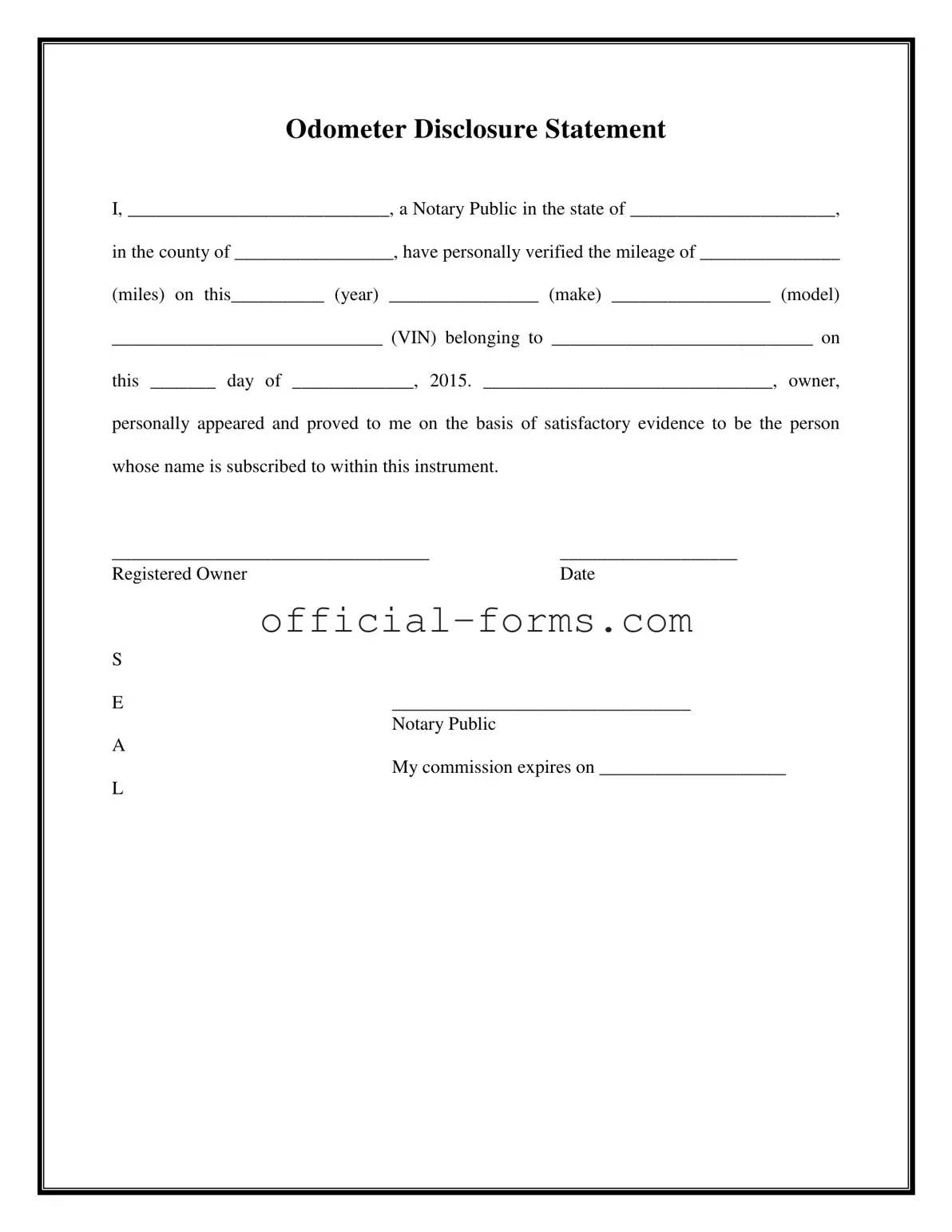Filling out the Notarized Odometer Statement form is a crucial step in the vehicle transfer process. However, many people make mistakes that can lead to delays or complications. One common error is failing to provide accurate mileage. When reporting the mileage, it is essential to ensure that the number is correct and reflects the actual distance the vehicle has traveled. An incorrect figure can raise suspicions and may even lead to legal issues.
Another mistake often seen is neglecting to include the vehicle identification number (VIN). The VIN is a unique identifier for the vehicle and is critical for the notarization process. Without it, the document may be considered incomplete or invalid. Double-checking this information before submitting the form can save time and prevent potential disputes.
People sometimes forget to fill in all required fields on the form. Each section, including the owner's name, vehicle make, model, and year, must be completed. Omitting any information can result in the document being rejected by authorities. It is important to read through the entire form carefully and ensure that every box is filled out accurately.
Additionally, individuals may overlook the date of notarization. The date is significant because it confirms when the document was executed. If the date is missing or incorrect, it can lead to confusion regarding the validity of the statement. Always make sure to include the correct date before submitting the form.
Another frequent oversight is the failure to have the form notarized properly. The presence of a notary public is essential for the document's legitimacy. If the notary does not sign or stamp the form correctly, the statement may not hold up in legal situations. It is advisable to confirm that the notary has completed their part thoroughly.
Lastly, people often neglect to keep a copy of the completed form for their records. Retaining a copy is important for both the seller and the buyer, as it serves as proof of the transaction and the disclosed mileage. Having this documentation can be invaluable if any questions or disputes arise in the future.
